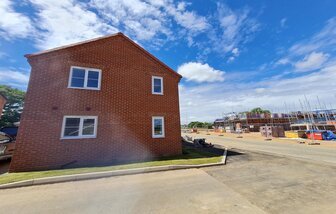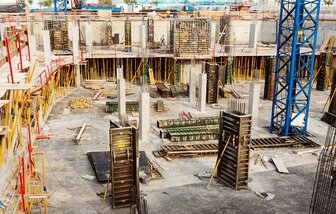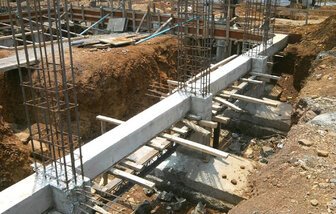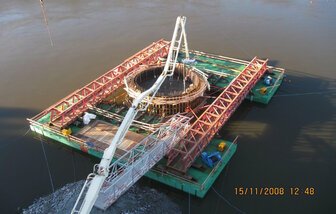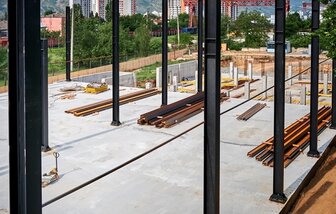Building Piled Foundation in the UK: All You Need to Know
A Learn all about piled foundations in the UK, including what they are, why they are chosen, and the different types available. Find out how piled foundations are constructed and why they are important for building stability. Consult with a qualified engineer or foundation specialist to determine the most suitable foundation for your specific requirements
What is a Piled Foundation?
When it comes to constructing a building in the UK, one of the most important considerations is the foundation. A solid foundation is crucial for the structural integrity and stability of any building.
In certain cases, a piled foundation is the best solution to ensure a strong and stable base. This article will provide you with all the essential information you need to know about building piled foundations in the UK.
A piled foundation is a type of deep foundation that is used when the soil conditions at a construction site are not suitable for shallow foundations.
It involves driving long, slender columns known as piles into the ground to transfer the load of the building to a deeper, more stable layer of soil or rock.

There are several reasons why a piled foundation may be the best choice for a building project in the UK:
- Unstable soil conditions: If the soil at the construction site is weak or prone to settlement, a piled foundation can provide the necessary stability.
- Heavy loads: Piled foundations are commonly used for buildings that will bear heavy loads, such as high-rise structures or industrial buildings.
- Proximity to water: If the construction site is near a body of water, such as a river or a lake, a piled foundation can prevent the building from being affected by changes in the water table.
- Noise and vibration control: Piled foundations can help minimize the impact of construction activities on the surrounding environment, particularly in urban areas.
There are different types of piled foundations that can be used depending on the specific requirements of the building project:
- Driven piles: These are piles that are installed by driving them into the ground using a pile driver. They can be made of various materials, including concrete, steel, or timber.
- Screw piles: Screw piles are a type of driven pile that are twisted into the ground using a hydraulic motor. They are often used in areas with difficult soil conditions.
- Bored piles: Bored piles are created by drilling a hole into the ground and then filling it with concrete or other materials. They are commonly used in areas with hard or rocky soil.
The construction process for a piled foundation typically involves the following steps:
- Site investigation: A thorough site investigation is conducted to assess the soil conditions and determine the appropriate type of piled foundation.
- Pile design: The piles are designed based on the load requirements and the soil conditions at the site.
- Pile installation: The piles are driven or bored into the ground using specialized equipment.
- Pile testing: After the piles are installed, they are tested to ensure that they meet the required load-bearing capacity.
- Foundation construction: Once the piles are in place, the foundation is constructed on top of them, providing a stable base for the building.
Piled foundations are typically used in the following situations:
1. Weak or Unstable Soil
When the soil at a construction site is weak or unstable, traditional shallow foundations may not provide sufficient support. Piled foundations are used to bypass the weak soil layer and transfer the load to a more stable layer beneath. This is particularly common in areas with clay, silt, or loose sand.
2. Heavy Loads
Structures that are expected to carry heavy loads, such as high-rise buildings or industrial facilities, often require piled foundations. The deep penetration of the piles allows for a larger load-bearing capacity, ensuring the stability and safety of the structure.
3. Expansive Soils
Expansive soils, which undergo significant volume changes due to moisture content variations, can cause significant damage to shallow foundations. Piled foundations are used to minimize the effects of soil movement by reaching deeper, more stable layers that are less affected by moisture changes.
4. Sloping Sites
On sloping sites, piled foundations can help distribute the load evenly and provide stability. The piles can be installed at different depths to accommodate the varying ground levels, ensuring a level base for the structure.
5. Waterlogged Areas
In areas with a high water table or waterlogged conditions, traditional shallow foundations may not be feasible. Piled foundations are ideal for such locations as they can be installed to reach below the water table, providing a stable and secure base for the structure.
6. Retrofitting
Piled foundations are also used for retrofitting existing structures. When a building requires additional support due to changes in usage or structural deficiencies, piles can be added to strengthen the foundation and enhance its load-bearing capacity
Piled foundations offer several advantages:
- Increased load-bearing capacity
- Ability to withstand challenging soil conditions
- Reduced risk of settlement or foundation failure
- Flexibility in design and installation
- Minimal disturbance to the surrounding environment
- Potential for reuse or removal if needed
Building a solid foundation is essential for any construction project in the UK. Piled foundations offer a reliable solution when the soil conditions are challenging or when heavy loads need to be supported. By understanding the benefits and types of piled foundations, you can make an informed decision for your building project. Consult with a qualified engineer or foundation specialist to determine the most suitable foundation for your specific requirements.
Soft Strip foundations
Learn about soft strip foundations, a type of shallow strip foundation commonly used in the United Kingdom. Discover how they work, their advantages, and considerations to keep in mind
Trench fill foundation
Trench fill foundations are similar to strip foundations but differ in that the trench is filled with concrete rather than individual concrete or masonry blocks.
Piled foundation
Piled foundations are used when the soil conditions are challenging or when the load on the foundation is particularly heavy. This type of foundation involves driving or drilling deep piles into the ground
What is a raft foundation?
Raft foundations are a popular choice for many construction projects, providing a stable and durable base for buildings. Explore the benefits of raft foundations, the construction process
Piled raft foundation
Piled raft foundations combine the advantages of piled foundations and raft foundations. They involve the use of both piles and a large concrete slab to distribute the load over a wider area.
Caisson foundation
Caisson foundations, also known as pier foundations, are used in areas with a high water table or poor soil conditions. This type of foundation involves drilling or excavating
Pad foundation
Pad foundations, also known as isolated footings, are used to support individual columns or posts. They consist of a single concrete pad that distributes the load from the column to the soil
Building foundation hub
At Total, we are dedicated to providing you with the essential knowledge and resources you need to build a strong foundation in various fields. Whether you are a student, professional, or simply curious a
Ready to start your project ?
Let's Work Together
To get started, for general enquiries simply complete the form below. Provide us with your project details, and our team will review your requirements. We will then get back to you with a customised solution that fits your needs. Whether you have a small-scale project or a large-scale development, we have the expertise and resources to handle it. Once we have received your submission, you will receive a confirmation email (Please check all your email boxes)
If you prefer, and have a project in mind and seeking a price you can also send us your project documents and any photographs directly to Price@totalregen.co.uk. We will carefully examine your documents and provide you with a competitive quote together with a timescale from inception through to completion for your project.

